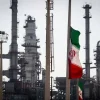As of 2025, the global natural gas industry is at a pivotal juncture, balancing robust demand growth with the imperative of transitioning to cleaner energy sources. This article delves into the current state of the industry, highlighting key trends, regional dynamics, and future prospects.
1. Global Demand Trends
In 2024, global natural gas demand reached a new all-time high, with over three-quarters of growth stemming from emerging markets and developing economies. The International Energy Agency (IEA) reports that demand increased by 2.7% (approximately 115 billion cubic meters) in 2024, surpassing the average annual growth rate of around 2% from 2010 to 2019. This surge was primarily driven by industrial activities and electricity generation, especially in fast-growing Asian markets like China and India .IEA+1IEA+1
2. LNG Market Expansion
Liquefied Natural Gas (LNG) continues to play a crucial role in meeting global energy needs. Shell’s LNG Outlook 2025 forecasts a 60% increase in global LNG demand by 2040, largely propelled by economic growth in Asia . In the United States, LNG exports are a significant driver of natural gas demand growth, with a projected 18% increase in exports by pipeline and as LNG in 2025 compared to 2024 .Shell GlobalEIA
3. Regional Developments
Asia-Pacific
Emerging markets in Asia are at the forefront of natural gas demand growth. In 2024, gas demand in these economies expanded by approximately 6%, accounting for nearly 40% of the global increase. This growth is attributed to continued economic expansion and increased use of gas for power generation and industrial processes IEA.
Europe
Europe’s natural gas landscape is undergoing significant changes. The cessation of gas transit through Ukraine at the beginning of 2025 has shifted supply dynamics, with the TurkStream pipeline becoming the sole route for Russian gas directly to Europe. This development has prompted European countries to diversify their gas sources, including increased LNG imports and alternative pipeline agreements Wikipedia.
North America
In the United States, natural gas demand is projected to grow by 4% in 2025 compared to 2024, driven by increased exports and residential and commercial consumption. The U.S. Energy Information Administration (EIA) forecasts that residential and commercial sectors will average 23.0 billion cubic feet per day in 2025, a 1.8 billion cubic feet per day increase from the previous year EIA.
4. Infrastructure and Investment
Significant investments are underway to support the growing demand for natural gas. In the United States, Venture Global’s Calcasieu Pass LNG terminal in Louisiana is transitioning to full commercial operations, fulfilling long-term contracts with major clients like Shell, BP, and Repsol. Additionally, the company’s Plaquemines LNG facility, which began production in December 2024, is already exceeding design capacity, contributing to the U.S.’s position as a leading LNG exporter Reuters.
In Qatar, the North Field Expansion project aims to increase LNG production capacity from 77 million tons per year to 126 million tons per year by 2027. This expansion is part of QatarEnergy’s strategy to solidify its position in the global LNG market .WikipediaWikipedia+1Wikipedia+1
5. Challenges and Outlook
Despite the positive growth trajectory, the natural gas industry faces several challenges. Geopolitical tensions, such as the ongoing conflict in Ukraine, have disrupted traditional supply routes and prompted countries to reassess their energy security strategies. Additionally, the global push towards decarbonization and the adoption of renewable energy sources may impact long-term demand for natural gas.
Nevertheless, natural gas is expected to remain a vital component of the global energy mix in the near to medium term. Its role as a cleaner-burning fossil fuel makes it a suitable bridge in the transition towards more sustainable energy systems.
Conclusion
The global natural gas industry in 2025 is characterized by robust demand growth, significant infrastructure investments, and evolving regional dynamics. While challenges persist, the industry’s adaptability and strategic developments position it to continue playing a crucial role in meeting the world’s energy needs.






